Bone-a-fide
Osteoporosis is a skeletal disorder that occurs when a body loses too much bone or doesn’t make enough bone. Bone tissue deteriorates, leading to an increased risk of fracture. The Bone Health and Osteoporosis Foundation states that 54 million Americans have osteoporosis, most of them elderly.
Osteoporosis is often called a “silent” disease since the first symptom is often a broken bone. However, if you experience any of the following, share your concerns with your primary provider. They may refer you to a orthopedic physician.
Symptoms
- Sloping shoulders
- Curvature of the back
- Height loss
- Back pain
Testing
Osteoporosis is confirmed with a bone density test. The U.S. Preventive Services Task Force recommends that women aged 65 and older and postmenopausal women with an increased risk of osteoporosis have a bone density test. A conversation with your doctor will help you decide when to have the testing done.
Thankfully, the test is painless. It’s like having an X-ray. The test will measure your bone density and compare it to the bones of an average, healthy adult. Your result is called a T-score. The T-score will let your doctor know whether you have healthy bones, osteoporosis or osteopenia, which is low bone density, but not as severe as osteoporosis.
Treatment
Based on your T-score, your doctor may propose a treatment plan.
- Possibly prescribe medications to build bone mass and prevent bone loss.
- Increase your calcium.
- Make sure you are getting enough vitamin D.
- Encourage physical activity.
The same things your doctor recommends for treatment are also ways to prevent osteoporosis.
Prevention
- Maintain a healthy weight.
- Eat foods that support bone health, like calcium, vitamin D and protein.
- Choose more low-impact activities like walking, swimming and biking over high-impact activities.
- Cut back on smoking and drinking. Chronic use of both is proven to weaken bones.
Talk to your primary care physician about the best ways to avoid this disease.
Learn more about the Genesis Orthopedic Center at Genesishcs.org/orthopedic.
Ready to get healthy?
Sign up for our digital newsletters to receive health tips, recipes, success stories for inspiration and information about new doctors to help you on your journey to better health.
Genesis HealthCare System’s Health and Wellness content conveniently provides accurate and helpful information. Your health history and current health may impact suggestions provided through our Health and Wellness content. Although we hope this information is helpful, it is not a substitute for your doctor's medical advice. Before making any significant changes, please consult your doctor.
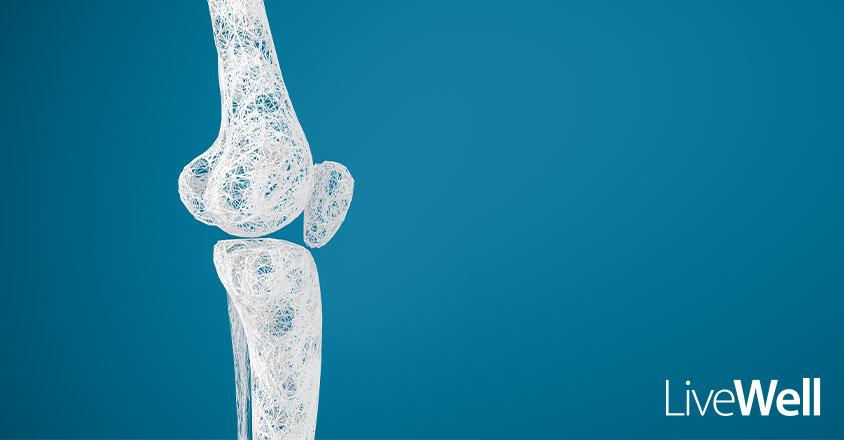
Information on the symptoms, treatment and prevention of osteoporosis.
Tips to help women stay healthy
Hey you, it’s me – your body. While I’m feeling pretty good right now, we can’t take things for granted. You and I need to get on the same page to make sure things don’t start going downhill. Can you help by following these tips? It’ll make my job so much easier – and more enjoyable for both of us.
Get regular checkups and screenings
Seeing your family doctor or OB/GYN on a regular basis is vitally important. Your doctor is your partner in keeping you on a healthy path or in managing chronic health conditions like diabetes or high blood pressure. Your doctor will also make sure you get the routine screenings essential for early detection of disease, like mammograms, Pap smears and blood work.
Get at least 30 minutes of daily physical activity
Exercise helps you feel your best – plus, it helps keep your weight in check. It can improve the quality of your sleep and helps prevent bone loss and osteoporosis, too.
Get 7 to 9 hours of sleep
A good night’s sleep helps you feel sharper, elevates your mood and can help prevent other health issues.
Eat healthy
Eating healthy and including more fresh fruit and vegetables in your diet can help you maintain a healthy weight, promote strong bones and teeth, and reduce the risks of cancer, diabetes, heart disease and strokes. Plus, it improves your mood and memory.
Reach and maintain a healthy weight
When you’re at a healthy weight, you lower the risk of heart disease, stroke, high blood pressure and diabetes, and also help reduce the risk of many different cancers.
Get help to quit smoking
If you quit smoking, nearly everything improves. You’ll have healthier blood, heart and lungs. Your bones, muscles and immune system will be stronger, too. Plus, you will have clearer skin and fresher breath.
Limit alcohol to one drink or less
Limiting alcohol to one drink or less per day helps reduce the risk of some cancers, liver disease, heart disease and high blood pressure.
Use drugs only as prescribed
Prescription or illegal drug use and misuse can damage your body and mind. If you think you may have a problem, get help sooner rather than later.
Drive safely
In the U.S., road crashes are the greatest killer of women and men under age 55. Wearing a seatbelt greatly reduces your risk. Also, texting and driving is six times more dangerous than driving while intoxicated. Pull over or wait until you get home.
Genesis HealthCare System’s Health and Wellness content conveniently provides accurate and helpful information. Your health history and current health may impact suggestions provided through our Health and Wellness content. Although we hope this information is helpful, it is not a substitute for your doctor's medical advice. Before making any significant changes, please consult your doctor.
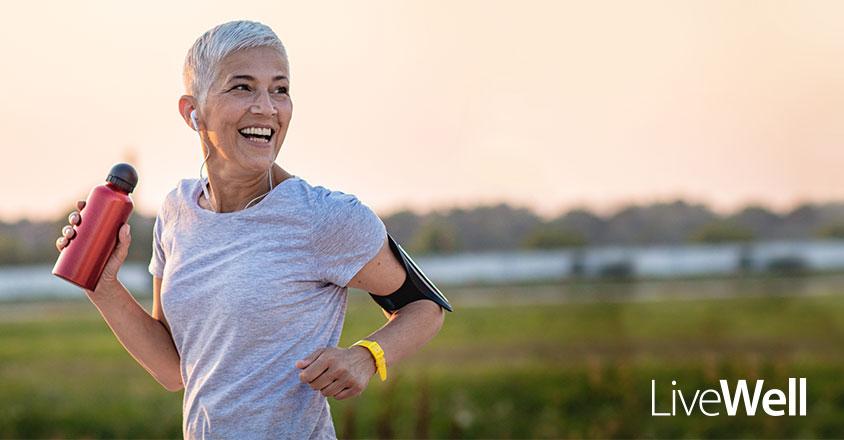
Keep yourself healthy by following these tips to stay on top of women's health.
Healthy homemade popsicles
Ingredients:
• 5 ounces of strawberries (about 6 medium strawberries)
• 6 ounces of blueberries (about 1 ¼ cups)
• 7 tablespoons of granulated sugar
• 5 tablespoons of lime juice
• 1 ounce of ice cubes (about 3 ice cubes)
• 10 tablespoons of water
Instructions:
1. Red (strawberry) layer:
- Cut 5 ounces of strawberries and place them in a small saucepan with 2 tablespoons of granulated sugar and 2 tablespoons of water.
- Boil on medium-high heat, then simmer for 5 minutes. Blend until smooth, then add 1 tablespoon of lime juice and 1 ounce of ice cubes. Stir until the ice is melted and the mixture cools.
- Divide the puree among 6 popsicle molds, tapping them to remove air bubbles. Freeze for at least 1 hour and while that’s freezing, move on to the next layers.
2. White (lime) layer:
- Place 3 tablespoons of lime juice and 2 tablespoons of granulated sugar in a liquid measuring cup and stir until the sugar is completely dissolved. Add enough cold water to make 3/4 cup lime mixture.
3. Blue (blueberry) layer:
- Combine 6 ounces of blueberries, 3 tablespoons of granulated sugar and 2 tablespoons of water in a saucepan.
- Boil on medium heat, then simmer for 5 minutes. Blend until smooth, adding 1 tablespoon of lime juice. ° Chill until needed.
4. Combining the layers:
- When the red layer is completely solid, divide the white mixture evenly among the molds. Freeze until mostly frozen, about 45 minutes. Insert the popsicle sticks and freeze until completely solid, about 30 minutes.
- Divide the blue mixture evenly among the molds. Freeze until completely solid, at least 2 hours. When ready to serve, run lukewarm water over the outside of the molds so they release easily.
5. Enjoy.
Nutritional information:
• Calories: 85
• Total fat: 0.2 g
• Sodium: 2.1 mg
• Cholesterol: N/A
• Carbohydrates: 21.9 g
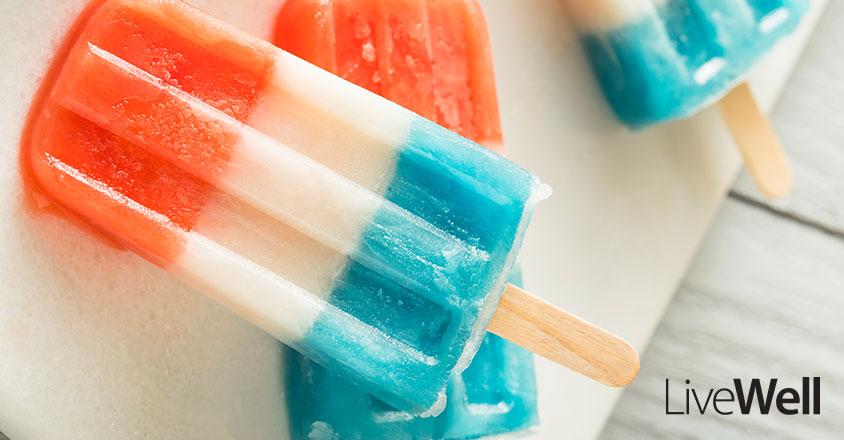
You will love this creative summertime treat.
Keep the sneeze away year-round
If you suffer from allergies, you may think you only need to worry about flowers, pollen and pets. Did you know that dust mites are one of the most common allergy triggers? Dust mites are microscopic insect-like pests that are everywhere.
To reduce dust and dust mites follow these tips for the:
Air
- Don’t use window or attic fans, which bring pollen, mold spores and other allergens inside.
- Use air conditioning instead of opening windows.
- Use a high-efficiency particulate air (HEPA) filter. This can help remove allergens and tobacco smoke from the air in your home.
Furniture and carpets
- Use dust-proof pillow and mattress covers made from a tight-weave fabric that keeps out dust and dust mites.
- Remove stuffed toys, wall hangings, books, knickknacks and artificial flowers.
- Avoid wool blankets and down quilts.
- Avoid carpet, rugs and upholstered furniture that collect dust.
- Occasionaly steam clean carpets.
Floors
- Damp-mop hard floors once a day.
- Dust and vacuum once or twice a week.
- Use a dry cloth to wipe hard surfaces such as countertops and tables weekly.
- Use a vacuum cleaner with a HEPA filter or a double-thick bag.
- Wear a mask to avoid dust mites stirred up during cleaning.
- Keep humidity less than 50% in your home. Dust mites don’t do well in dry conditions.
Genesis HealthCare System’s Health and Wellness content conveniently provides accurate and helpful information. Your health history and current health may impact suggestions provided through our Health and Wellness content. Although we hope this information is helpful, it is not a substitute for your doctor's medical advice. Before making any significant changes, please consult your doctor.

If you suffer from allergies, you may think you only need to worry about flowers, pollen and pets.
Forgetfulness and aging: What’s normal and what’s not?
Everybody forgets things once in a while, but if you notice it happening more frequently, is it cause to worry? According to the Alzheimer’s Association, there is growing evidence you can reduce the decline in cognitive skills, which include the process of remembering, reacting and understanding, with lifestyle habits such as:
- Regular cardiovascular exercise that elevates your heart rate
- Formal education, at any stage of life, helps your mind
- Stop smoking
- A healthy diet, one low in fat and high in fruits and vegetables
- Plenty of sleep
- Involvement in social activities that are meaningful to you
- Activities that challenge your mind, like games, puzzles or a building project
What’s the difference between normal, age-related forgetfulness and a serious memory problem? There are signs to help determine the difference. Typical age-related changes include:
- Sometimes forgetting names or appointments but remembering them later.
- Sometimes having difficulty finding the right word.
- Misplacing things from time to time and retracing steps to find them.
Signs to watch for that might go beyond the typical age-related changes include:
- Memory loss that disrupts daily life and repeating the same questions.
- Having trouble naming a familiar object, joining a conversation or repeating words.
- Placing items in unusual places or go so far as to accuse others of stealing, especially as the disease progresses.
If you, a family member or friend has problems remembering recent events or thinking clearly, talk with a doctor. He or she may suggest a thorough checkup to see what might be causing the symptoms.
Genesis HealthCare System’s Health and Wellness content conveniently provides accurate and helpful information. Your health history and current health may impact suggestions provided through our Health and Wellness content. Although we hope this information is helpful, it is not a substitute for your doctor's medical advice. Before making any significant changes, please consult your doctor.
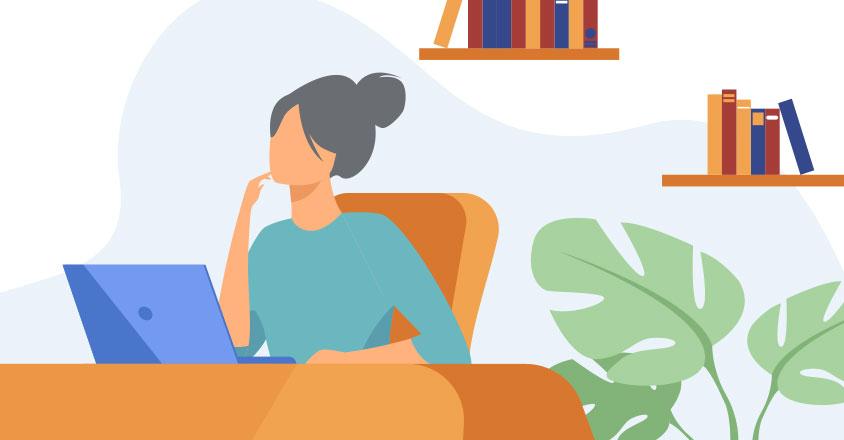
Everybody forgets things once in a while, but if you notice it happening more frequently, is it cause to worry?
Heart healthy chocolate pie
Ingredients:
13 ounces semisweet chocolate chips
1/3 cup coffee liqueur
1 teaspoon vanilla extract
1 pound silken tofu, drained
1 tablespoon honey
1 (9-inch) prepared chocolate wafer crust
Directions:
Place enough water in the bottom of a 4-quart saucepan to come 1 inch up the sides. Bring to a simmer over medium heat.
Melt the chocolate chips with the liqueur and vanilla in a medium metal bowl set over the simmering water, stirring often with a rubber or silicone spatula. Combine the tofu, chocolate mixture and honey in a blender or food processor and spin until smooth, about 1 minute.
Pour the filling into the crust and refrigerate for 2 hours, or until the filling sets firm.
Chocolate wafer crust
Ingredients:
• 6 1/2 ounces chocolate wafer cookies
• 1 tablespoon sugar
• 3 ounces unsalted butter, melted and slightly cooled
Nutrition facts:
• Calories 484
• Total Fat 24 g
• Sodium 363 mg
• Total Carbohydrates 62 g
• Fiber 1 g
• Sugar 14 g
• Protein 5 g
Find more recipes at genesishcs.org/eatwell.
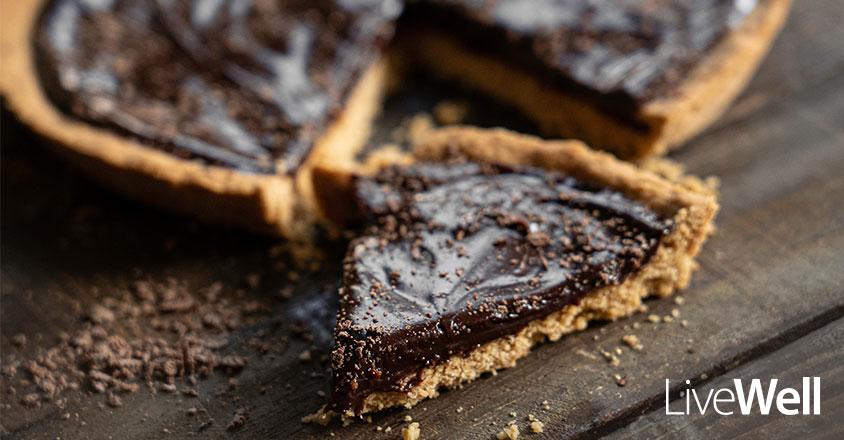
Try this delicious and healthy option for homemade chocolate pie!
Lower your cholesterol naturally
Maybe you just came from the doctor’s office and learned your cholesterol is too high. Maybe you want to avoid hearing those words from your doctor. Either way, take our quiz to learn more about cholesterol and tips to lower it naturally.
1. All cholesterol is bad.
False. Cholesterol is made up of HDL (good) cholesterol and LDL (bad) cholesterol. Good cholesterol helps your body build cells and make vitamins. If you have too much of the bad cholesterol or not enough of the good, it can build up in the arteries leading to a heart attack or stroke.
2. Foods with a lot of fiber and no saturated fats are best for naturally lowering cholesterol.
True. According to Harvard Health, the best 11 foods to naturally lower your cholesterol are oatmeal (the old-fashioned kind), white (navy) beans, avocado, eggplant, carrots, almonds, kiwi, berries (raspberries and blackberries are the best, but strawberries and blueberries are also good), cauliflower, soy and salmon.
3. Eating colorful fruits and vegetables can lower your cholesterol.
True. Colorful fruits and vegetables are good sources of fiber and contain sterols and stanols, molecules that block cholesterol. Generally, the richer the color of vegetables and fruits, the more nutrients they have. So, when shopping, look for dark green spinach, vibrant blueberries and so on.
4. Exercise is the most important thing you can do to lower your cholesterol naturally.
False. For decades, a healthy diet and exercise were recommended to naturally lower cholesterol. However, according to Harvard Health, an analysis found that exercise did not lower cholesterol. However, exercise provides so many other health benefits you should exercise regularly.
Eating healthy is a great way to lower cholesterol naturally. However, sometimes our bodies need a little help, and there are medications to assist you when needed. If you have high cholesterol or want to prevent it, please talk to your family doctor about the best plan of action for you.
To learn more about options for heart health, visit genesishcs.org/heart.
Genesis HealthCare System’s Health and Wellness content conveniently provides accurate and helpful information. Your health history and current health may impact suggestions provided through our Health and Wellness content. Although we hope this information is helpful, it is not a substitute for your doctor's medical advice. Before making any significant changes, please consult your doctor.
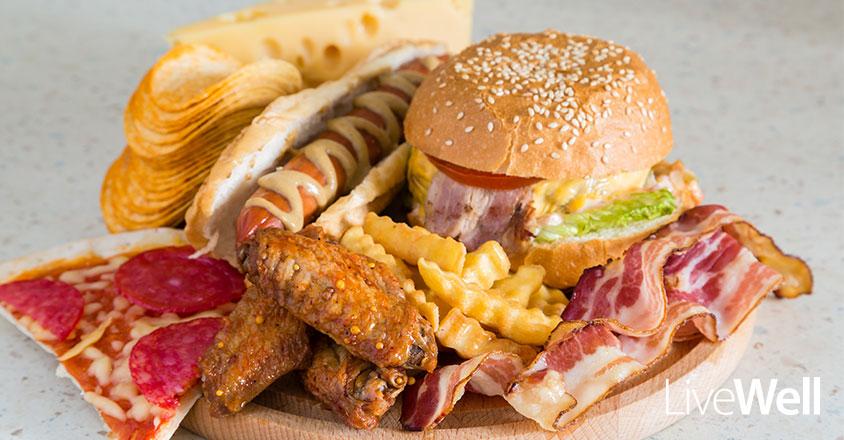
Take our quiz to learn more about cholesterol and tips to lower it naturally.
Can you boost your immune system?
From the sniffles to the flu, being sick is no fun. Thankfully, our immune system is constantly working to keep us healthy. Are there things we can do to make our immune system stronger? Sadly, the answer is unclear. Research has struggled to consistently find evidence that says we can.
However, even after acknowledging the inconclusive research, Harvard Health and the Centers for Disease Control and Prevention (CDC) have similar recommendations for helping your immune system perform at its highest level.
Top recommendations for supporting your immune system include:
Eat a healthy diet – a variety of fruits and vegetables can provide you with the vitamins and minerals needed to keep you healthy. According to Harvard Health, the recommended amount is two servings of fruits and three servings of vegetables a day.
Exercise – You should aim for 150 minutes of moderate-intensity exercise a week. Not a fan? Then read our blog on How a couch potato can have a healthy heart for tips and reasons to get moving.
Get enough sleep – Typically, adults need at least 7 hours of sleep a night. To learn multiple benefits of getting enough sleep and sleep recommendations by age, read our Sleep matters blog.
Avoid drinking alcohol or do so in moderation – Certain groups of people should never drink based on health factors. However, according to the CDC, if you are going to drink, women should have one drink or less a day, and men should have two drinks a day or less.
Don’t smoke – Smoking is bad for you. Period. To learn a few ways smoking negatively impacts your health, take our Health of effects of smoking quiz.
Maintain a healthy weight – According to the CDC, obesity leads to your immune system not working at its strongest capacity. For more information on a healthy body weight, visit this page on the CDC website.
If you are following these guidelines and still struggle to stay healthy, talk to your family doctor to find out if there is an underlying cause.
Genesis HealthCare System’s Health and Wellness content conveniently provides accurate and helpful information. Your health history and current health may impact suggestions provided through our Health and Wellness content. Although we hope this information is helpful, it is not a substitute for your doctor's medical advice. Before making any significant changes, please consult your doctor.
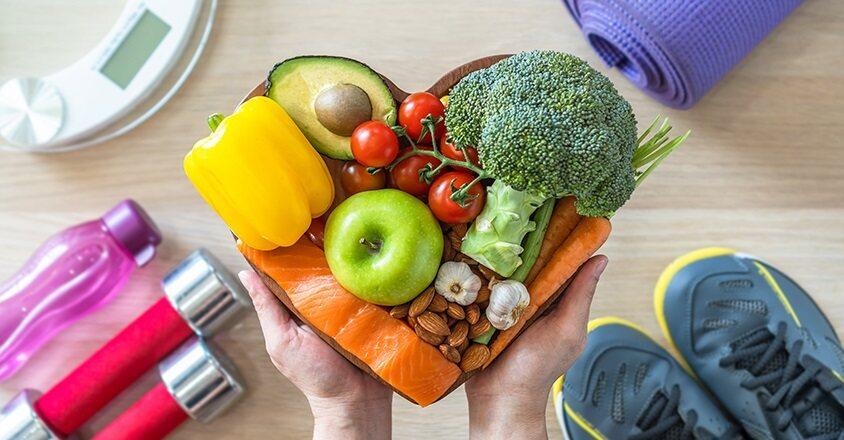
From the sniffles to the flu, being sick is no fun. Thankfully, our immune system is constantly working to keep us healthy.
Tips to prevent falls
Two out of three falls occur when someone slips or trips. This is especially true if you live in a climate that includes freezing temperatures in the winter. Cold weather makes it easier to fall and harder to maintain your balance.
For instance, people slip or trip on:
Visibly icy surfaces
Black ice, a coating of ice so thin that people think it’s asphalt or pavement
Ice that’s covered by snow or snow drifts
Unplowed sidewalks and streets
A fall becomes more dangerous when:
Ice and snow makes it difficult to get up
Exposure to freezing temperatures compounds the fall or injury
Fall statistics
Falls are the number one reason for injury-related Emergency Department visits and accidental deaths in people aged 65 and over. Prevention is key.
Indoor prevention
Remove hazards (bags, baskets, cords and anything in walkways)
Good lighting
Non-slip rugs
Make sure your clothes and shoes fit
Bathroom grab bars
Outdoor prevention
Make sure surfaces are clear
Use assistance devices for stability (walkers, canes)
Dress for the weather
Use a path you know
Good lighting
General safety measures
Walk with a buddy
Carry a cell phone
Carry a medical alert system
Wear watches with fall sensors
Make a daily phone call or check in with a friend, family member or neighbor
If you fall, soften your landing
Flex forward into the fall, which gives you some control over direction. Fall sideways, if possible.
Tuck your head and turn your shoulder into the fall to protect your head.
Relax everything and fall like a sack of beans.
Fall on the soft, fleshy places, like your buttocks and thighs. These areas have more protection and are lower to the ground.
As you complete the fall, try to roll to your side in a ball. This will spread the impact to reduce injury and stop you from rolling farther.
Genesis HealthCare System’s Health and Wellness content conveniently provides accurate and helpful information. Your health history and current health may impact suggestions provided through our Health and Wellness content. Although we hope this information is helpful, it is not a substitute for your doctor's medical advice. Before making any significant changes, please consult your doctor.
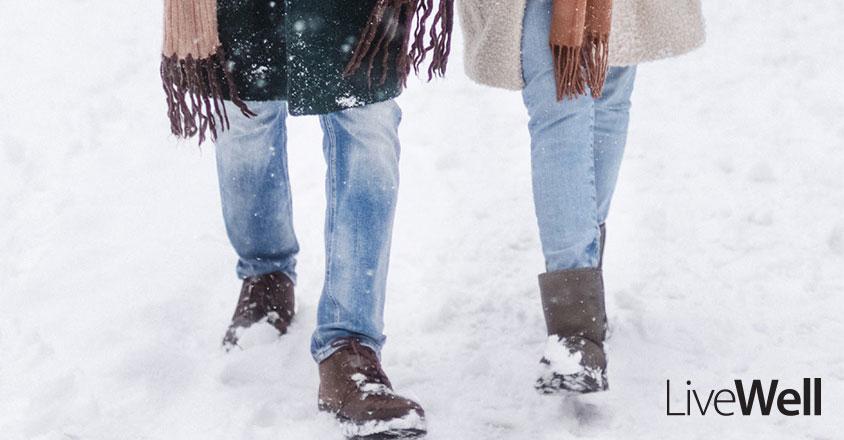
Two out of three falls occur when someone slips or trips. This is especially true if you live in a climate that includes freezing temperatures in the winter.
Three Reasons to stay strong with strength training
What comes to mind when you think of strength training? A huge bodybuilder lifting massive dumbbells while barely breaking a sweat? While that is one example of strength training, you don’t need to run to a fitness convention to reap the benefits of this type of exercise. (Unless that’s your thing.)
What is strength training?
Strength training, also known as weight training or resistance training, is a type of training that builds your muscles and bones. Strength training is different than walking or cycling. It typically includes exercises like squats, pushups, glute bridges, planks and lunges.
Why should you incorporate strength training into your exercise routine? Here are three good reasons:
Reason #1: Increased mobility
A big concern as we age is our mobility. No one wants to struggle to complete their daily activities or do the things they love. According to the National Institute on Aging, a huge cause of reduced mobility is sarcopenia. Sarcopenia is a decline in muscle mass, strength and function. It has been linked to fatigue, low energy and weakness. You may have heard the saying “use it or lose it.” This applies to many things in life, including our muscles. Strength training is a great way to keep your body engaged, build muscle mass and improve mobility.
Reason #2: Ease chronic conditions
According to the Centers for Disease Control and Prevention (CDC), strength training reduces the symptoms of common chronic conditions such as arthritis, diabetes, osteoporosis, heart disease and back pain. Strength training improves each condition differently, including building bone density, strengthening muscles and reducing pain and stiffness.
Reason #3: Improves mental and emotional health
Combining strength training with aerobic exercise like walking or running can significantly improve mental and emotional health. According to the CDC, studies show that exercise helps people sleep better, lessens the length and severity of depression and improves self-confidence.
So, how do you get started?
To begin strength training, figure out your own comfort level. Are you new to strength training or do you have some experience? If you’re worried about your form or how to do a certain movement safely, work with a personal trainer or take a workout class at your local gym. There are free workouts online that can be performed safely at home or at the gym. You should also talk to your Primary Care Physician before starting a new fitness program.
Genesis HealthCare System’s Health and Wellness content conveniently provides accurate and helpful information. Your health history and current health may impact suggestions provided through our Health and Wellness content. Although we hope this information is helpful, it is not a substitute for your doctor's medical advice. Before making any significant changes, please consult your doctor.
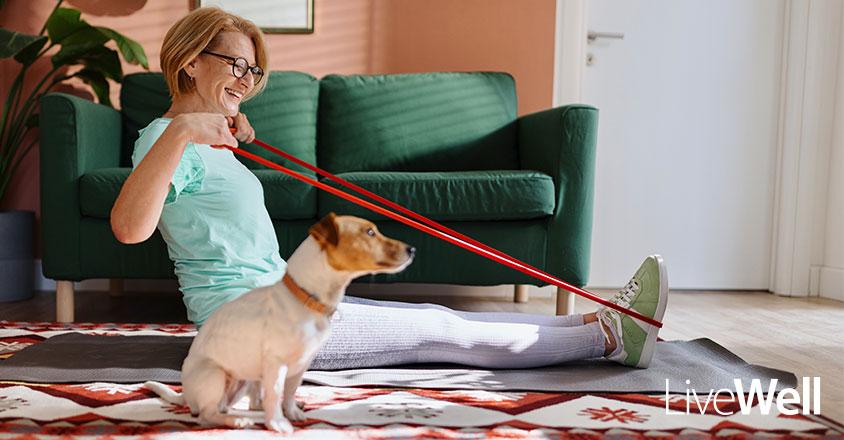
Strength training can improve mobility, lessen the effects of chronic conditions and improve mental and emotional health.